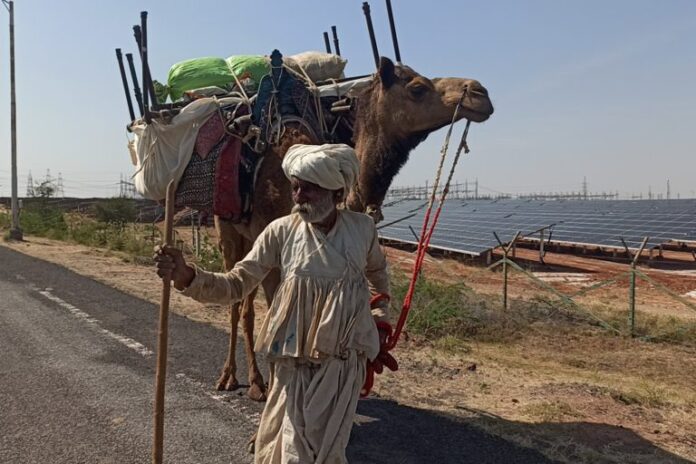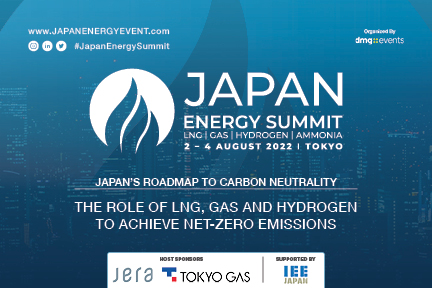A decade on, India’s first solar park has many promises left to fulfil
A decade on, India’s first solar park has many promises left to fulfil
The Gujarat Solar Park, India’s first utility-scale solar park, sets an example of how renewable energy development, if not done right, can lead to more environmental harm than good.
10 years after the project came up, the villagers of Charanka, the project site, are still waiting for clean drinking water, free electricity, and irrigation.
Against the promise of 1,000 permanent jobs, only 60 people in the village have been employed as security guards, grass cutters and for washing panels, with no scope for jobs for women, making families who did not have land or sons the worst victims of the solar park.
“You should come here during the monsoon to see how big our gauchar (grazing land) was,” reminisces Nanu Rabari, 60, as she breaks pods of Prosopis juliflora, called gando bawal (mad tree) in Gujarat, to feed her only milking buffalo. Rabari is a resident of Charanka, a sleepy village near the India-Pakistan border that garnered worldwide attention 10 years ago for housing India’s first and Asia’s then-largest solar park. The Gujarat Solar Park (GSP) in Charanka village of Gujarat’s Patan district came with promises of jobs and development but apart from Rabari’s grazing land, it took away the main water sources of this already-parched village.
Thirty six companies operate in the GSP, spread across 5,384 acres (2,178.82 hectares), producing 730 megawatts (MW) of solar power. Further, projects of 20 MW are under implementation including a 15 MW project which is being opposed by the villagers.
The 5,384 acre Gujarat Solar Park in Patan and other solar parks in Gujarat’s Kutch district. Maps by Technology for Wildlife.
The solar park was launched on December 30, 2010, and was commissioned on December 31, 2011. A bumpy road lined with open drains marks the entry to Charanka, a stark contrast to the visuals of a “world-class” project that the Gujarat Power Corporation Limited (GPCL) advertises.
“If the government was really concerned about us, they should have given us a canal, not a solar park. We have no use for it … neither it feeds our animals nor us,” Nanu, who cultivated fodder on a two-acre plot of government wasteland that has now been taken over by the GSP, told Mongabay-India. “Irrigation would have meant a better crop and less spending on buying fodder,” she said.
Nanu, who has seven daughters, had to sell off her 150 sheep and a camel three years ago because, in place of her green gauchar now stands a monoculture of grey solar panels.
Her family income comes from varied means – a daughter who gets a monthly honorarium of Rs. 2,000 as an ASHA worker, another daughter working as a frontline worker for an NGO gets Rs. 3,500 every month, the milk from the buffalo which pays only for the cost of fodder, and a small shack that she runs selling biscuits, chips and candies. “Since the schools have shut down in the pandemic, there is no income from that (the shack) either,” she rued.
Her daughter, 22-year-old Matu Rabari went to the district headquarter Patan, 130 kilometres, away to study. “There is a hostel for Rabari girls there so I was able to study up to graduation hoping that I would get a job back home in the solar park. But there is no job for girls here. Earlier, we would go to cut grass 1-2 times in a month and get Rs. 300 but even that option is not there anymore,” Matu, now a graduate, said. The jobs at the companies are available through sub-contractors.
In this way, the solar park, say the locals, has brought in dual misery for women. Not only did they not get any jobs in the companies, but also have reduced employment opportunities in agriculture. “Earlier, the landless would earn a bit by working on others’ farms but with the land going into the park, even that possibility has reduced,” Matu told Mongabay-India.
Charanka was a chorad (vast pastureland) before the solar park came. According to Neeta Pandya of Maldhari Rural Action Group (MARAG), an Ahmedabad based non-profit working for pastoralists, Maldharis (pastoralists) believed in the idea of commons and never owned large chunks of land, something they are paying for now.
“Many of them, when they heard about the GSP, sold off their livestock to buy tractors, which did earn them money during the construction phase of the park. But what followed was distress migration,” said Pandya while pointing that of the 160 Maldhari families in Charanka, only about 10 have livestock now.
Unfulfilled promises
When the Gujarat Solar Park was dedicated to the country in April 2012, Narendra Modi, the then chief minister of Gujarat, declared that a ‘Surya Tirth’ and a picnic spot on the lines of the Modhera sun temple will be built in Charanka. “GSP would be the new sun temple, creating 30,000 jobs including in the manufacturing of solar panels,” he announced.
“Modiji also promised a school from Class 8 to 12, a hospital, drinking water and free electricity to the village, none of the above in the list is checked till now,” said Sumersinh Jadeja, the Sarpanch (village head) of Charanka.
Jadeja emphasised that “the companies who had set up the plant here in 2011-12 are still selling power at the rate of Rs. 15 per unit so a plant is earning Rs. 75,000 on every one megawatt of power produced per day. With that kind of profit, the little they could do was build some facilities for the village. The GPCL says that they have transferred Rs. 50 lakhs (Rs. five million) for CSR to the Collector’s office in Patan. Nothing has come our way till date though,” Jadeja told Mongabay-India while pointing towards the solar park.
The promises of free electricity, drinking water, transport and schools – which the residents have been waiting for – were made verbally. But there seem to be no written records to hold anyone accountable. The people of the village though, have been keeping track of all the promises made and not met.
Sami Ben (name changed), a resident of Charanka, said “there is an electric line from the park to the village but instead of free electricity, the bills have only gone up in recent years. From Rs. 500-1000 earlier, it is Rs. 2,500 now.”
Drinking water supply has been another unfulfilled promise, she adds. “The government supply is once in 5-7 days when we fill our 500 or 1,000-litre tanks. If more is needed, we have to buy water tankers at the rate of Rs. 1,000 per tanker from the nearby Fangli village. Water was always scarce here but with the company coming in, we expected at least clean drinking water,” said Sami Ben.
The one parab (a public drinking water stall) by PLG Photovoltaic Pvt. Ltd., with no pipeline attached, stands testimony to the remarkable absence of any CSR (Corporate Social Responsibility) scheme in the village.
A GPCL official, when asked about water supply promises, said they had planned to install an RO system for the village but the forest department had already installed one. “So we put it on hold. We realised that the Panchayat (local administration) has not been able to maintain that system and it is lying as waste. So, we didn’t go ahead about installing a new system,” he told Mongabay-India on conditions of anonymity.
Another promise – a school till class 12 – also remains unfulfilled so far. The only school in Charanka is till Class 8 and for lack of transport (three buses a day from Charanka to Santalpur was part of the promise) to Santalpur town that is 20-kilometres away, most children, especially girls, are forced to drop out of higher education.
Anjali (name changed), could not study beyond grade 8 because, in the Rajput community, to which she belongs, she alleged girls are not allowed to go out of the village alone. “If only the company had fulfilled their promise of building a school till class 12, my dream of further education would not have shattered,” she told Mongabay-India.
“I have not seen any written record of the above promises. However, we have placed a tender for an ambulance and a fire brigade for the village. The facility will soon be here,” said the GPCL official.




